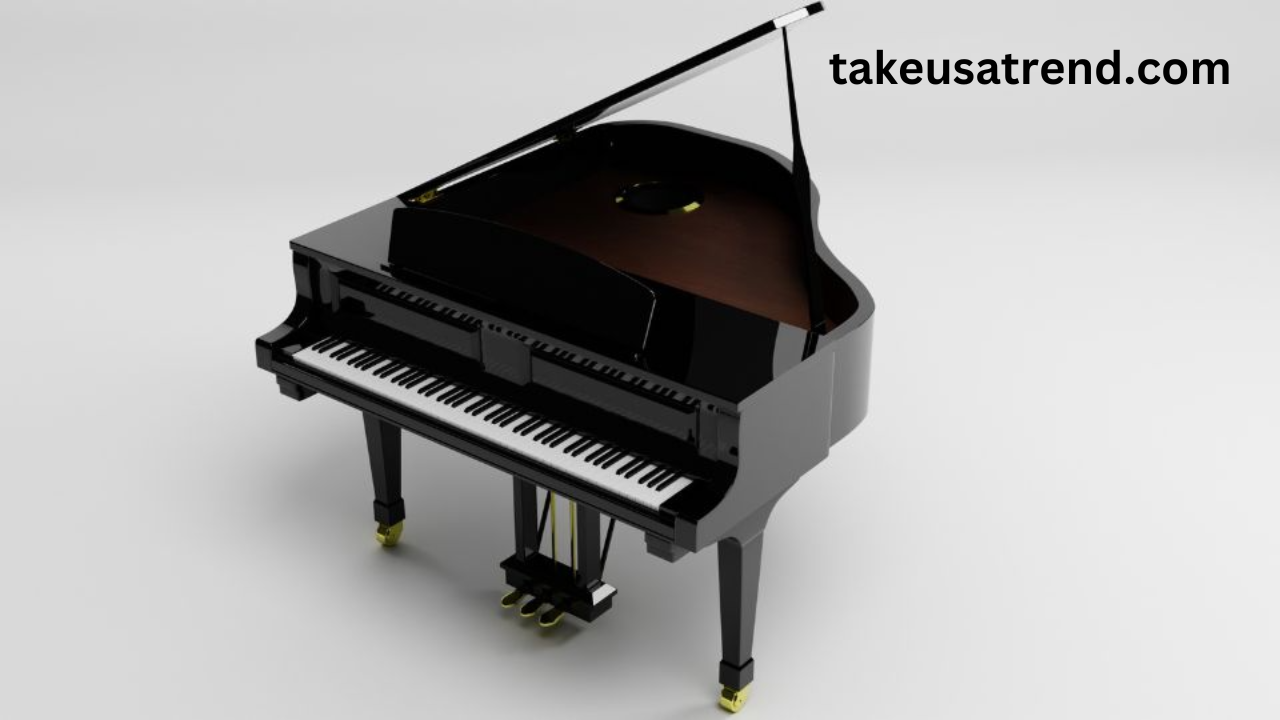

Arcade Output Piano Keys Bridging Music and Gaming in Interactive Entertainment
Arcade out put piano keys represent a fascinating intersection between musical creativity, technological innovation, and interactive entertainment. From rhythm-based arcade games to custom-built piano key controllers for gaming, this niche topic opens doors to numerous intriguing aspects. This article delves into what arcade output piano keys are, how they function, their applications, and their broader impact on music, gaming, and technology.
Understanding Arcade Output Piano Keys
Arcade out put piano keys refer to key-like interfaces used in arcade settings, designed to simulate the feel and functionality of a piano. These keys can be part of an arcade game, an interactive display, or a specialized controller designed to output signals that a connected system can interpret. The outputs from these keys may include digital signals, MIDI (Musical Instrument Digital Interface) data, or other communication protocols used to trigger actions in software or hardware.
Unlike traditional pianos, arcade output piano keys are designed for rapid, repetitive interaction. Their primary goal is to balance durability with responsiveness while providing a tactile experience that mirrors traditional piano keys.
Key Components and Mechanisms
To understand how arcade out put piano keys function, it is essential to break down their key components and mechanisms:
- Key Structure
- Material: Arcade piano keys are typically made of high-durability plastics or composite materials to withstand constant use.
- Design: The keys are larger and more robust than standard piano keys, accommodating rapid and forceful presses common in arcade settings.
- Input Mechanism
- Switch Types: Beneath each key lies a mechanical, optical, or capacitive switch. Mechanical switches, often borrowed from gaming keyboards, provide tactile feedback, while optical and capacitive switches ensure high-speed, wear-free operation.
- Velocity Sensitivity: Some high-end arcade keys incorporate velocity-sensitive switches to measure how hard a key is pressed, adding a layer of dynamic control.
- Output Protocols
- Digital Signals: Arcade keys often output binary signals (on/off states) for simplicity in games and interactive displays.
- MIDI Signals: For musical applications, the keys output MIDI data, including information about pitch, velocity, and duration.
- USB/Serial Communication: Many systems use USB or serial connections to transmit key presses to a computer or gaming system.
- Lighting and Feedback
- Arcade piano keys frequently feature RGB lighting to enhance the user experience. The lighting may serve as a visual cue, signaling which keys to press during gameplay.
Applications of Arcade Output Piano Keys
The use of arcade ou tput piano keys spans several domains, from gaming and education to music production and interactive installations. Here are some key applications:
- Rhythm Arcade Games
- Games like Beatmania IIDX, Synthesia, and Piano Tiles utilize piano-like keys to challenge players’ timing and coordination. The keys’ outputs are interpreted as inputs in the game, where players must match on-screen prompts to score points.
- These games have popularized the concept of piano-based gameplay, attracting both music enthusiasts and casual gamers.
- Music Education
- Arcade-style piano interfaces are increasingly used in educational settings. Interactive software paired with these keys helps beginners learn piano in a gamified environment.
- MIDI output from arcade piano keys can be used with music notation software to provide real-time feedback, improving learning outcomes.
- Interactive Installations
- Large-scale public installations often feature arcade piano keys for interactive experiences. Examples include “walk-on pianos” in shopping malls or art exhibits where users step on keys to create music.
- These installations rely on durable arcade output piano keys keys that can withstand high foot traffic while maintaining responsiveness.
- Custom Controllers for Music Production
- DIY enthusiasts and professional musicians alike use arcade piano keys to create custom MIDI controllers. These controllers offer a unique blend of gaming aesthetics and musical functionality.
- Velocity-sensitive keys enable nuanced control for dynamic music production, making them suitable for live performances and studio work.
Technical Aspects of Arcade Out put Piano Keys
The technical design and functionality of arcade out put piano keys involve a combination of hardware engineering, software integration, and user experience considerations. Below are some key technical aspects:
- Signal Processing
- When a key is pressed, the switch beneath it generates an electrical signal. This signal is processed by a microcontroller or embedded system, which interprets the input and sends corresponding output data to the connected system.
- In MIDI-based systems, the microcontroller translates the key press into MIDI messages, including the note’s pitch, velocity, and duration.
Previous article; The 56-46 Spencer Bullet A Historical Overview
- Latency Considerations
- Low latency is crucial for arcade-style keys, especially in rhythm games and live music applications. Delays in processing key presses can disrupt gameplay or performance.
- Advanced systems use high-speed switches and optimized firmware to ensure minimal latency.
- Durability Testing
- Arcade keys undergo rigorous testing to ensure they can endure millions of presses without failure. This durability is essential in arcade settings where keys are subjected to heavy use.
- Customization and Programmability
- Many arcade piano key systems are designed to be programmable, allowing users to customize key mappings, lighting effects, and output protocols.
- Open-source firmware like QMK (Quantum Mechanical Keyboard) enables users to modify the behavior of arcade keys for unique applications.
Innovations in Arcade Piano Key Design
Advancements in technology have driven several innovations in the design and functionality of arcade output piano keys. Some notable developments include:
- Touch-Sensitive Keys
- Newer models incorporate touch-sensitive technology, enabling users to trigger actions with a light touch or slide. This innovation enhances the tactile experience and allows for advanced gameplay mechanics.
- Haptic Feedback
- Some arcade piano keys now feature haptic feedback mechanisms that provide a physical response, such as a vibration or click, when a key is pressed. This feature improves the user experience by mimicking the feel of traditional pianos.
- Wireless Connectivity
- Bluetooth-enabled arcade piano keys offer greater flexibility and portability, allowing them to connect to mobile devices and computers without the need for cables.
- Integration with Virtual Reality (VR)
- Arcade piano keys are being integrated into VR platforms, enabling immersive musical experiences. Players can interact with virtual pianos using physical keys, bridging the gap between the real and virtual worlds.
Cultural Impact and Popularity
The popularity of arcade output piano keys has grown significantly over the years, influencing various cultural and entertainment trends:
- Bridging Music and Gaming
- Arcade piano keys have brought the worlds of music and gaming closer together. Rhythm games featuring piano keys have inspired players to take up real piano lessons, while musicians have explored gaming as a means of artistic expression.
- Fostering Creativity
- The gamified approach to music-making encourages creativity, especially among younger audiences. Interactive systems with arcade piano keys make learning music more accessible and enjoyable.
- Global Appeal
- Arcade games featuring piano keys have achieved global success, transcending language and cultural barriers. The universal appeal of music makes these games and installations popular worldwide.
Future Prospects arcade output piano keys
The future of arcade out put piano keys is promising, with potential advancements in technology and broader adoption in various fields. Some trends to watch include:
- AI Integration
- Artificial intelligence could be used to enhance the functionality of arcade piano keys. For example, AI algorithms could analyze user performance and provide real-time feedback or adaptive challenges in games and educational tools.
- Augmented Reality (AR) Experiences
- AR technologies could transform arcade piano keys into dynamic interfaces where users interact with virtual elements projected onto the keys.
- Sustainability
- As the demand for arcade-style interfaces grows, manufacturers are exploring eco-friendly materials and energy-efficient designs to minimize their environmental impact.
- Cross-Disciplinary Applications
- Beyond gaming and music, arcade piano keys could find applications in therapy, rehabilitation, and team-building exercises, offering interactive and engaging solutions for various needs.
Conclusion
Arcade output piano keys represent a unique blend of music, technology, and interactivity. From their use in rhythm games and educational tools to custom controllers and public installations, these keys have carved out a distinct niche in the worlds of gaming and music. As technology continues to evolve, the possibilities for arcade piano keys are virtually limitless, promising even more innovative applications and experiences in the years to come.








